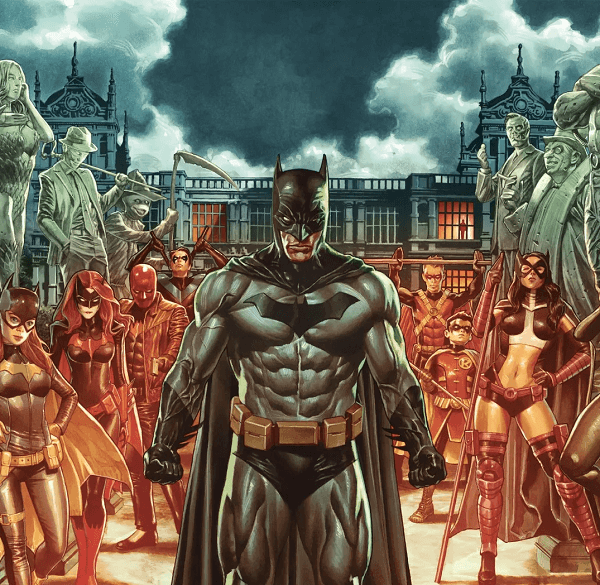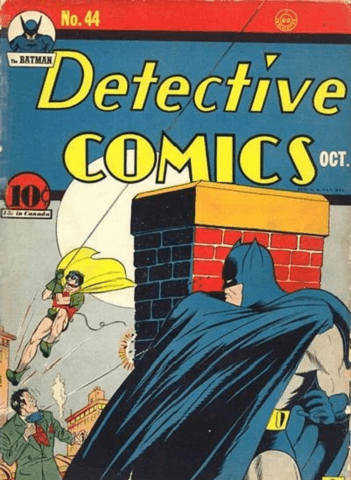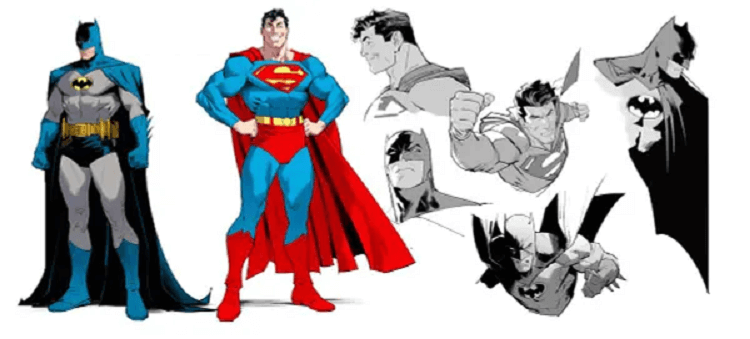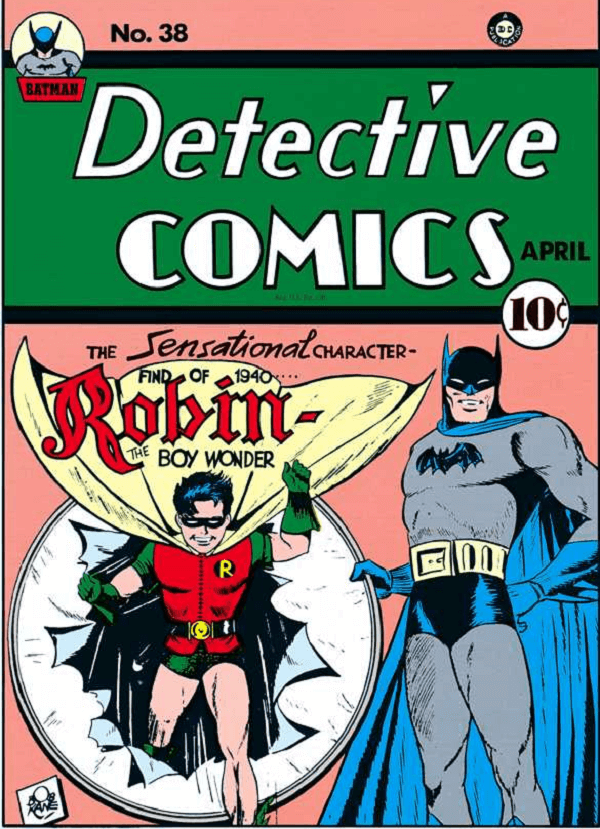What is the Full Form of DC ComicsDC Comics: Detective ComicsDC Comics stands for Detective Comics. American comic book publisher Detective Comics, later abbreviated to DC Comics, is the source of the Detective Comics series. The first volume's most famous issue (meaning of issue is episode) , published from 1937 until 2011 (and later in 2016), is Detective Comics #27, which debuted the superhero Batman (cover-dated May 1939). 
In September 2011, a second series with the same name was released. However, in 2016, it resumed using the previous volume numbering. Its publishing company takes its name from this series, which is also one of the most well-known in the genre, Action Comics, which debuted alongside the launch of Superman. The series, which ran from 1937 through 2011, produced 881 issues, making it the longest-running comic book in the country. Previous WritingsThe businessman Major Malcolm Wheeler-Nicholson formed National Allied Publications, which would eventually grow to become one of the two largest comic book publishers in the world after its founder had left, and produced the final issue of Detective Comics. One of Wheeler-first Nicholson's two publications was the revolutionary New Fun, The Big Comic-Magazine #1 (cover-dated February 1935), also known as New Fun Comics #1. It was the first early comic book to contain only original material rather than a combination of newspaper comic strips and new material written in the style of comic strips. Detective Comics, his third and last publication under his direction, would be promoted despite having a cover illustration with a December 1936 release date, the album's cover with a March 1937 release date eventually debuted. A year later, Wheeler-Nicholson was made to leave. Harry Donenfeld, who owned a printing business and distributed magazines and was a pulp magazine publisher and a partner in the magazine distribution company Independent News, was the debtor to Wheeler-Nicholson. Detective Comics #1 (March 1937), which debuted as a period-appropriate anthology comic, contained tales of the "hard-boiled detective" genre and included characters like Slam Bradley (developed by Jerry Siegel and Jack Kirby), Ching Lung (a "Yellow Peril" villain in the Fu Manchu manner), and others. Before Superman appeared in print two years later, Joe Shuster, Speed Saunders, and other authors contributed. Vin Sullivan, the publication's first editor, drew the cover of the first issue. In issue #20, The Crimson Avenger first appeared (October 1938). Racism and xenophobia have been criticized in the series early issues. Bruce Wayne / The BatmanBatman made his debut in Detective Comics #27 (March 1939; actual publication date: May 1939). Eventually, that superhero would take centre stage in the comic book series Detective Comics featuring Batman, the name of which needs to be corrected on the cover. Due to its significance, issue #27 is regarded as one of the most expensive comic books ever created, one copy sold for $1,075,000 in an auction in February 2010. 
The history of Batman has first revealed in issue #33's two-page tale (Nov. 1939). With issue #35, Batman took over as the title's primary cover image (Jan. 1940). Batman's sidekick Robin debuted in issue #38 (April 1940). The first of many "Batman Family" members, Robin, was referred to as "The Sensational Character Find of 1940" on the front cover. The emergence of Robin and the ensuing rise in book sales immediately started the trend of superheroes and juvenile sidekicks that defined the period referred to by fans and historians as the Golden Age of Comic Books. The Penguin in issue #58, Two-Face in issue #66, and the Riddler in issue #140 were among Batman's most notorious foes to make their debuts in these Detective Comics issues. Bat woman's initial publication was Detective Comics #233 (July 1956). Editor Jack Schiff advised Batman co-creator Bob Kane to develop a family formula for Batman because it had been extremely successful for the Superman brand. They initially chose a girl to refute Fredric Wertham's assertions that Batman and Robin were homosexual. In issue #267 (May 1959), writer Bill Finger and illustrator Sheldon Moldoff debuted Bat-Mite, and in issue #298, Clay face (Dec. 1961). Julius Schwartz was tasked with bringing back the dwindling Batman comics in 1964. Writer John Broome and illustrator Carmine Infantino gave the character a "New Look" that debuted in Detective Comics #327 in response to the sillier features like Ace the Bat hound and Bat-Mite that had crept into the franchise. Detective Comics #387, a story commemorating Batman's 30th anniversary, was written by Mike Friedrich and illustrated by Bob Brown (May 1969). Dennis O'Neil and Neal Adams Batman story "The Secret of the Waiting Graves" was first featured in issue #395. (Jan. 1970). 
Les, a comics historian, O'Neil's portrayal of Batman as a vindictive obsessive-compulsive, which he modestly portrays as a return to the origins, was truly an act of creative imagination that had an impact on every iteration of the Dark Knight, according to Daniels. Under the guidance of Schwartz, the team would revive the character with several memorable tales that restored Batman's brooding darkness and moved the comics away from the cartoonish aesthetic of the 1966-68 ABC TV series. In Detective Comics #400, Adams and writer Frank Robbins debuted the Man-Bat (June 1970). In issue #411, he first introduced Talia al Ghul. (May 1971). Detective Comics, which had previously been released monthly throughout its existence, switched to the bimonthly publication from issues #435 (June-July 1973) to #445. 1975 (February-March). They used the 100 Page Super Spectacular format to collect issues #438 (December 1973-January 1974) through #445 (February-March 1975) of the series. For the story "There Is No Hope in Crime Alley," which appeared in issue #457, O'Neil and illustrator Dick Giordano created Leslie Thompkins, a supporting character for Batman. Steve Englehart and Marshall Rogers created a famous sequence of Batman stories for Detective Comics #471-476 (Aug. 1977-April 1978), one of which served as the foundation for the 1989 Batman movie and the animated series that would follow. The Joker is bold enough to deform fish with a rictus grin in their novel "The Laughing Fish." He expects to be provided a federal trademark on them, only to begin murdering the officials who attempt to inform him that such a claim on a natural resource is not permissible under the law. The third incarnation of the supervillain Clay face was co-created by Rogers and writer Len Wein for Detective Comics #478. (July-Aug. 1978). The magazine adopted the expanded Dollar Comics format used by the cancelled Batman Family in issues #481 (December 1978-January 1979) through #495 (October 1980), adding solo features like "Robin: "The Teen Wonder," "Batgirl," "The Human Target," and the anthology "Tales of Gotham City," which featured tales of the city's commoners. As of issue #484, Julius Schwartz, who had edited the book for the majority of its existence since 1964, departed from it (June-July 1979) in its initial "The League of Assassins killed Katherine Kane," commonly known as "Batwoman," in the cover story of issue #485 (August-September 1979). The 500th issue of the journal (March 1981) featured works from several well-known authors, including pulp fiction legend Walter B. Gibson and television writer Alan Brennert. The primary Batman plot was serialized during the 1980s, with stories from Detective Comics and Batman flowing directly from one issue to the next. Both volumes were written by the same person during that time, starting with Doug Moench and continuing with Gerry Conway. After each book's monthly story, some cliff-hangers would be resolved in the other title for that month. In issue #523, the supervillain Killer Croc made a mysterious appearance (Feb. 1983). The Ventriloquist and the Ratcatcher were debuted by writer Alan Grant and artist Norm Breyfogle's in first and third Batman stories, respectively (#585 and 45). The "Blind Justice" tale appeared in Detective Comics issues #598-600 and was written by Sam Hamm, who also penned the screenplay for Tim Burton's Batman. With issue #644, Chuck Dixon assumed writing duties for the collection (May 1992). The Electrocutioner was one of their joint creations, appearing in Detective Comics #644 (May 1992). Also featured in Detective Comics #647 is Stephanie Brown. The plot for "Batman: Legacy" debuted with issue #700. (August 1996). In issues #730-741, the "No Man's Land" narrative entered Detective Comics. Greg Rucka and Shawn Martinbrough joined forces as the creative team with issue #742 (March 2000), and in issue #751, they introduced the character of Sasha Bordeaux (Dec. 2000). Pete Woods did the art for issue #800 (Jan. 2005), which Andersen Gabrych wrote. Since issue #821 (Sept. 2006), Paul Dini has written the series. With issue #871, Scott Snyder assumed writing duties for Detective Comics (Jan. 2011). Backup CapabilitiesIn Detective Comics #64 (June 1942), both Jack Kirby's and Joe Simon's made their comic book debuts, The Boy Commandos. In issue #153, Roy Raymond first appeared on Nov. 1949. Three times, Batman led the characters across borders. His feature appeared 15 times infrequently until issue #572, commemorating the run's end on the fiftieth anniversary of the book's publication by pitting him against Edgar Moriarty, Professor Moriarty's great-grandnephew, together with Batman, Robin, Slam Bradley, and Sherlock Holmes. Batgirl filled the position until issue #424, after the Elongated Man backup feature ended. She was moved to the Batman Family from issues #481 to 519. From Detective #425 to #435, Jason Bard served as the backup feature in the issues with odd numbers. 
Manhunter made his way to the front of the book with the final episode of the series in a full-length team-up with Batman. Beginning with issue #521 (Dec. 1982) and continuing until #567, The Green Arrow was the backup feature (Oct. 1986). In the supporting narrative of issue #554, The Black Canary gets a new outfit (Sept. 1985). For issues #746-8010, the backup features briefly appeared after a long hiatus. These featured new and well-known characters from the Batman mythos in more conclusive tales. As a lead-up to the 2002 Cat woman series, Slam Bradley featured in the following issues, #759-762. Detective Josephine "Josie Mac" MacDonald of the Gotham police was depicted in issues #763-772 of the comic book. The magazine's "Tales of Gotham" issues #773-#775 contain articles about the detectives Crispus Allen and Renee Montoya. In "Spore," Batman appeared in issues #776-780. #781 had a special Elseworlds story, and #782 was a Batman standalone story. In issues #785-788, "The Dogcatcher" and "The Tailor" returned to the "Tales of Gotham" anthology. From issues #797 through #799, "Low," starring the Riddler and Poison Ivy, appeared. A brief Batman backup story appeared in Detective Comics #800 under the "Tales of Gotham" label. Next came "When You're Strange," a Barker-starring four-issue series (#801-805) that was followed by "Mud" in issue #805. The final backup was a three-issue Killer Croc adventure followed by a two-issue narrative (#806-807) starring Alfred. Archie Goodwin and Walt Simonson's epic "Manhunter" series earned the Shazam Award for "Best Individual Short Story (Dramatic)" in 1974 for the tale "Cathedral Perilous," which appeared in issue #441. Bat Woman
In 2009, Detective Comics took a three-month break while DC Comics released the Battle for the Cowl miniseries as part of a planned rearrangement of the Batman universe as a result of the events depicted in Batman R.I.P. and Final Crisis. Batman was again given a leading role in the series in early 2010. Renee Montoya was introduced as the new Question in a 10-page backup feature when the series came back, and Bat woman, recently established (in 52), became the book's new lead. The New 52Detective Comics was relaunched by DC Comics in September 2011 with issue #1 as a part of a project, The New 52. Tony Daniel wrote and illustrated the series until issue 12 when John Layman and Jason Fabok took over. Second, only to the relaunched Justice League, which had seven printings, the first issue of the relaunched Detective Comics has gone through six printings. According to Scott West of Sciencefiction.com, "It's fantastic to see "Detective Comics" rebounding after last month's horrible "Night of the Owls" tie-in issue," who gave the third arc of the book a positive review. The seventh issue of the series, which outsold several previous Batman series, was also DC Comics's 6th best-selling digital comic. This backup followed one starring Professor Hugo Strange. To commemorate, The New 52's first anniversary, DC published a number "0" of each original New 52 book in September 2012. These publications serve as prequels to the series and explain previously unrevealed narrative points. Due to Hurwitz's busy schedule and Daniel's hectic schedule, Hurwitz was asked to write the "0" issue. Daniel wrote Detective Comics Annual #1, which was pencilled by Romano Molenaar and inked by Sandu Florea, as a follow-up to the Night of the Owls aspects in Detective Comics. After Daniel left the show, Jason Fabok and John Layman took over as writers and artists, respectively. James Tynion IV continued to write the backup features while Szymon Kudranski continued to serve as the series' artist for Tynion's debut feature. The series achieved 900 issues when coupled with the first volume of the series with issue #19 of Detective Comics vol. 2, which was released on April 3, 2013. This issue was a special large celebratory edition. The first crossover of the series under Layman was Gothtopia. After that, Layman and Fabok went to the Batman Eternal series, and Brain Buccalleto and Francis Manapul took over as editors of Detective Comics. DC Comics announced "Villains Month," with Detective Comics receiving four issues, to mark The New 52's second anniversary. A group of writers and artists created the issues, numbered consecutively #23.1, #23.2, #23.3, and #23.4, and featured Poison Ivy, Harley Quinn, the Scarecrow, and the Man-Bat.
Next TopicFull Form
|
 For Videos Join Our Youtube Channel: Join Now
For Videos Join Our Youtube Channel: Join Now
Feedback
- Send your Feedback to [email protected]
Help Others, Please Share










